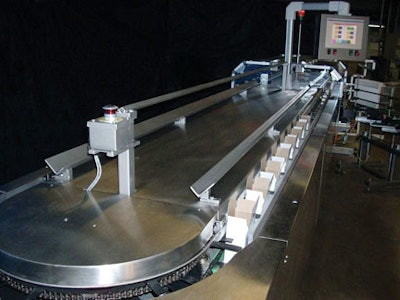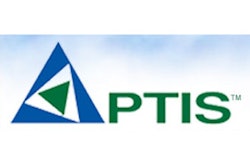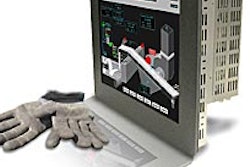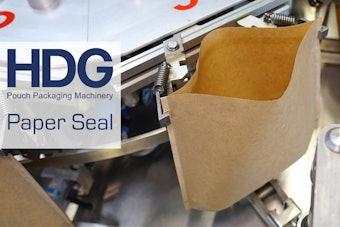
Ultra Packaging, Inc. recently faced a unique challenge: Make their servo-driven “Veronica” vertical cartoner packaging machine even more attractive.
A few years ago, the firm successfully incorporated a servo and motion logic control from Rexroth to replace the mechanical axes on its original vertical cartoner. The result was dramatically reduced changeover times with better accuracy.
Back then, the seven-axis Veronica provided the industry with a fast and reliable machine for creating cartons from flat paperboard blanks and precisely synchronizing the loading, closing, gluing, and other steps while avoiding carton jams. The multi-axis synchronization capability Rexroth offered was particularly appreciated.
However, with industry trends changing, Ultra Packaging decided they could make the machine even better. Specifically, customers were asking for greater flexibility in carton capacity (including the capability for handling a wider range of cartons), faster changeover, additional reductions in wiring and maintenance, and a reduced machine footprint with a cleaner and less cluttered control panel.
Ultra Packaging began working with local Rexroth automation distributor CMA/Flodyne/Hydradyne to take the machine to another level. When Ultra Packaging learned about Rexroth’s IndraDrive Mi family of integrated motor and servo drives, the OEM scheduled Veronica for its second makeover in just a few years. With the new integrated servo motor and drive concept, Ultra Packaging saw the potential for a machine that could run an even wider range of cartons, provide more precise control of multiple axes, reduce the machine’s total system footprint, cut changeover times still further, and significantly decrease maintenance and wiring costs at the same time.
The Veronica makeover takes shape
A leading feature in the new-generation seven-axis Veronica machine is its use of Rexroth IndraDrive Mi integrated servo motors and drives mounted directly on the machine and away from the control cabinet. The drives, each about the size of a deck of cards, are powered by a single Rexroth IndraDrive power supply in the control panel. This enables the use of a single cable for power and communication running from the cabinet, instead of the 14 cables required by the seven servo drives on the “old” Veronica (power cable plus encoder for each drive). The single cable is daisy-chained to each motor/drive unit on the machine, proving ideal for coordination of the crucial cartoning axes, including pushing/leading lug, top and bottom flap folder, rotary feed width adjust axis, top flap spreader, and depth adjustment, as well as an option to add a rotary feed axis drive as well. With the drives mounted on the machine, new axes can be added with just minor changes to the control panel.
“By transitioning to these motor/drives, we still kept the benefits of the servo-based system from the original Veronica,” said Bob Stockus, Ultra Packaging vice president, “but we reduced our linkages and other machine components by 60 percent. Our cabling cost has gone down about 40 percent and our time for field wiring alone has dropped 40 percent,” he said. “The new machine offers greater flexibility and has a cleaner, more space-efficient design with an overall footprint that’s about 20 percent smaller than our older Veronica,” he added. “And we can easily include an optional positioning axis to help packagers create more package shapes or larger sizes.”
At the heart of the new Veronica cartoner lies the Rexroth MLC motion logic controller, integrating synchronized motion on all axes as well as logic programming. The IndraMotion MLC features a wide range of open interfaces, including Sercos, Profibus, DeviceNet, and Ethernet/IP, allowing end-users to connect controllers and peripheral units from many different manufacturers. The IndraDrive Mi servos are tightly synchronized and controlled via Sercos digital interface for command and diagnostic feedback from each servo drive.
Similar to the original machine, the HMI operator interface consists of a Rexroth VCP terminal with a 10-inch color touch screen, communicating over Ethernet TCP/IP, making the transition from the “old” to new Veronica easier.
Stockus also noted how the new drive and control package frees up space in the main control panel. “A tight control panel often requires more cooling for the electronics, which also uses more energy” he said. “By moving the drives off the panel we eliminated about 40 percent of the heat in the cabinet without additional energy or component costs.”
The improved flexibility of the new cartoner isn’t limited to the drive and control systems. For carton transport, designers changed from a timing belt—a component used in the original Veronica—to a four-chain carton transport. The new transport system can handle a greater variety of cartons, and larger cartons cannot cause the belt to sag in the track and create the potential for jams. In addition, replacing the timing belt allowed Ultra Packaging to create an extended frame for loading large size cardboard blanks—up to five feet or more. This extra capability blended well with the advantages of the IndraDrive Mi-based servo concept, because faster changeover times mean the same machine can run a wide range of carton sizes within a shorter period of time. The change in carton transport from belt to chain also gave machine designers more options for specifying a wider pitch between transport lugs (up to 15 in.) to accommodate large warehouse club-style cartons.
Local automation distributor CMA/Flodyne/Hydrodyne, a key player in specifying components for the original Veronica, helped with the transition to the new integrated motor/drive approach as well by providing engineering assistance and component sizing.
Better performance, more options
Considering the superior performance of the previous servo-based Veronica cartoner, the advantages of the new-generation machine are truly notable. The reduced number of drive and control components required allowed Ultra Packaging to reduce the machine assembly time by nearly 40 percent. In addition, with just the power supply in the cabinet instead of all the drives, Ultra Packaging was able to reduce its control cabinet size by 25 percent, which helps make the machine more attractive to packaging customers.
Changeover speed has also been improved with the new Veronica. Simple two-dimensional changeovers can be performed in as little as five minutes while more complex three-dimensional changeovers can routinely be accomplished in 10 to 12 minutes. Switching from continuous to intermittent motion (placing the machine in indexed start-stop dwell mode) is accomplished with one touch of a button, making the new Veronica one of the few cartoners available with this capability. Finally, reducing the drive components reduces the need for maintenance by about 30 percent.
Perhaps the most interesting aspect of the new machine, however, is that its design and operation gives packagers more options. Speedy changeover times have extended the range of carton types, sizes, and configurations that can be produced within a given time on the same line. The no-sag, chain rail transport system and extended frame capability (a frame extension of up to 10 feet is now possible) further improve options for packagers. This includes the capability to run larger and heavier cartons for high-volume packaging (e.g., for catering and hospitality customers) or large items like those shipped by the seafood industry. Depending on their needs, customers can also specify the size of carton transport centers without changing the overall machine footprint.
Over the past few years, users of packaging machinery have come to recognize the benefits of servo motors and drives over mechanically controlled motion in cartoning machines. Now, thanks to the Veronica vertical cartoner’s impressive makeover, machine builders and end users alike are learning that design innovation can make an already impressive, flexible and cost-efficient servo solution even better.





















